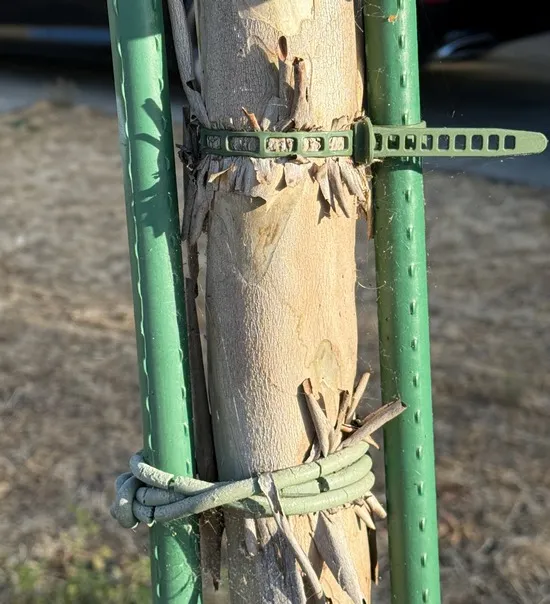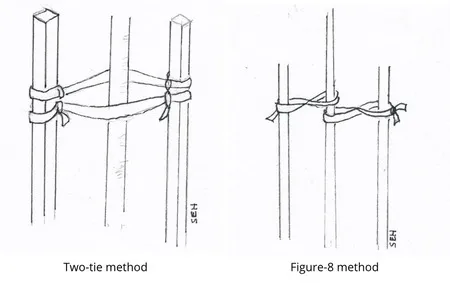Since we’re approaching fall and the best time to plant many landscape trees, it’s time to talk about staking those trees. Many newly planted trees do not need to be staked. Trees that might benefit include those planted in windy areas or on slopes, trees planted in sandy soil, and top-heavy trees with no lower branches.
Properly staked trees will grow stronger trunks. Young trees need flexibility in staking to allow some wind movement while still providing support. Movement of the tree encourages the trunk to fully develop to support the weight of branches, leaves, and fruit. When a tree is not given the flexibility to sway naturally, it fails to develop strong and flexible wood growth along its trunk. As a result, when the stakes are removed, the trunk is weak and not prepared to face nature’s forces. Rigidly staked trees often flop over after stakes are removed or even break in half in a strong wind rather than swaying and recoiling the way trees are designed to do.
Many trees come from the nursery with at least 1 stake tied closely to the tree. Many people, professional gardeners included, leave that stake in place when planting the tree into the ground. This stake may be tied tightly to the tree with non-elastic ties that could girdle the trunk as it grows.

Determine if your tree needs to be staked
After planting, remove the ties holding it to the nursery stake and remove the stake. If the tree can’t stand on its own, staking will be necessary. If it stands strong on its own, it doesn’t need staking unless planted in a windy location or on a slope. Some trees such as conifers and other trees that have branches close to the ground such as many citrus trees probably don’t need staking at all.
How to stake
Place two stakes outside the root ball on opposite sides of the tree. Orient the stakes so the prevailing wind blows through the stakes. Figure out how high the ties need to be by supporting the tree lightly starting at about 3 feet from the ground. If the tree is still flopping over, move your hand up the tree until it is standing upright. This is the level to place the one set of ties. There is no need to use additional ties above or below this.
What should ties look like
Ties need to be flexible and form a loose loop around the trunk. Ties should be wide with a smooth surface to protect the bark. You can use either the figure 8 method or the two-tie method.

What not to do
• Tie the tree too high. Let the tree move naturally as much as possible.
• Attach the ties tightly. Tight ties can damage bark and restrict water and nutrient flow.
• Leave the tree staked for too long. Plan to remove the stakes before one year.
For more information and illustrations, see these links:
https://ucanr.edu/sites/default/files/2010-08/42043.pdf
https://ipm.ucanr.edu/PMG/GARDEN/PLANTS/CULTURAL/staking.html
https://ucanr.edu/sites/default/files/2011-02/76562.pdf
Help Desk of the UC Master Gardeners of Contra Costa County (SEH)
